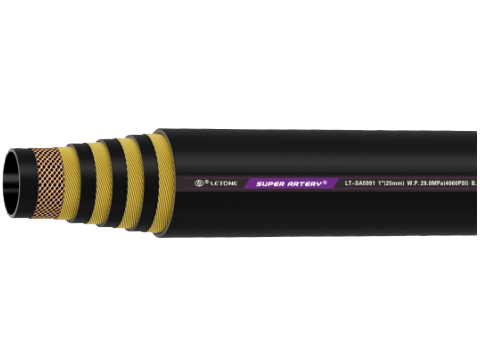Innovations in High-Pressure Hose Assemblies: Enhancing Performance and Reliability in Critical Ind
2025-04-29 14:07:31
High-pressure hose assemblies are indispensable components in hydraulic and pneumatic systems, enabling the safe and efficient transfer of fluids under extreme conditions. These assemblies, typically composed of reinforced rubber hoses and steel fittings, are engineered to withstand pressures up to 100 MPa and temperatures ranging from -40°C to +100°C. Their robust design, featuring multiple layers of wire braiding or spiral reinforcement, ensures durability in demanding applications such as mining, oil extraction, and heavy machinery.
Key Innovations Driving Performance
Recent advancements in material science have significantly improved the performance of high-pressure hose assemblies. Manufacturers now incorporate high-strength synthetic rubbers and composite materials, enhancing resistance to abrasion, corrosion, and chemical degradation. For instance, the use of aramid fiber reinforcement layers has reduced hose weight while increasing burst pressure ratings. Additionally, innovations in fitting design, such as modified seal rings, eliminate stress concentrations near coupling ends, minimizing failure risks in high-vibration environments.
Smart manufacturing technologies are also transforming production processes. Automated assembly lines equipped with real-time monitoring systems ensure consistent quality, reducing defects and improving efficiency. Some leading manufacturers now integrate IoT sensors into hoses, enabling predictive maintenance by tracking pressure fluctuations, temperature changes, and wear indicators.
Diverse Applications Across Industries
The versatility of high-pressure hose assemblies makes them critical in multiple sectors. In mining, they support hydraulic systems for roof supports and drilling equipment, operating reliably in harsh underground conditions. The oil and gas industry relies on these assemblies for offshore platforms and refineries, where they transport crude oil, hydraulic fluids, and chemicals at extreme pressures.
Construction and agricultural machinery also benefit from their durability. Excavators, cranes, and tractors use high-pressure hoses for steering, braking, and hydraulic attachments, requiring hoses that resist kinking and maintain flexibility in dynamic environments. Emerging applications in renewable energy, such as hydraulic systems for wind turbines, further expand their market potential.
Future Trends and Challenges
The global high-pressure hose market is projected to reach $20 billion by 2028, driven by infrastructure investments in Asia and industrial automation trends. However, the industry faces challenges, including raw material price volatility and stringent environmental regulations. Manufacturers are responding by developing eco-friendly alternatives, such as biodegradable rubber compounds and recyclable hose designs.
In conclusion, high-pressure hose assemblies continue to evolve, balancing performance, safety, and sustainability. As industries demand more efficient and reliable solutions, ongoing innovations in materials and manufacturing will ensure these components remain vital to modern industrial systems.